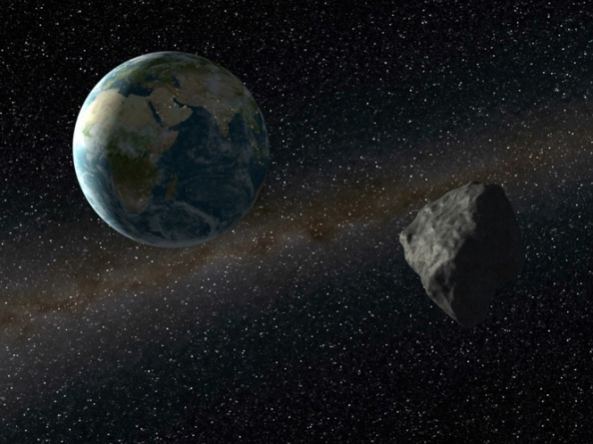CAPE CANAVERAL, Administrator of NASA, Charles Bolden, has a recommendation on how to handle an emergency, like a huge asteroid that is heading towards the city of New York: Pray. Good advice, if the USA believed in God; but that is not the current case, is it?

what to expect in the Future!
That is all that the United States-or any other country could do right now about unknown asteroids and meteorites that could travel on a collision course with Earth, Bolden said Tuesday lawmakers at a hearing before the Committee on Science of the House of Representatives.
An asteroid estimated to have been 17 meters in diameter exploded on February 15 Chelyabinsk, Russia, generating shock waves that smashed windows and damaged buildings. More than 1,500 people were injured.
Later that day, an asteroid larger and unrelated, which had been discovered the previous year, passed within 27,681 miles of Earth, closer than television satellites and climate orbiting the planet.
The events “serve as evidence that we live in an active solar system with potentially dangerous objects that pass through our neighborhood with surprising frequency,” said Rep. Eddie Bernice Johnson, D-Texas.
“We were lucky that last month’s events were just an interesting coincidence rather than a catastrophe,” said the committee chairman, Lamar Smith, a Texas Republican, who convened the hearing to find out what is being done and how much money is needed to better protect the planet.
NASA has found and is tracking about 95 percent of the largest objects flying near Earth, those with a diameter of 1 km or more.
“An asteroid that size, a mile or more, it could plausibly end civilization,” said science adviser John Holdren White House lawmakers at the hearing.
But about 10 percent of an estimated total of 10 000 possible asteroid “kill cities”, those with a diameter of 50 meters, have been found, said Holdren.
The average size objects that fall on the Earth every thousand years.
“From the information we have, we do not know of an asteroid that will threaten the U.S. population,” said Bolden. “But if that happens in the next three weeks, pray,” he added.
Besides increasing its monitoring efforts and international arms companies, NASA is seeking to develop technologies that divert an object that could travel with collision course with Earth.
“The chances of a near-Earth object hit us causing a huge number of casualties and destruction of infrastructure are very small, but the potential consequences of such an event are so great that it makes sense to take the risk seriously,” said Holdren.
Makes about 66 million years ago, an object 10 kilometers in diameter would have fallen into what is now known as the Yucatan Peninsula in Mexico, leading to the extinction of the dinosaurs, as well as most of the plant and animal life on Earth.
The asteroid that exploded over Russia last month is the biggest thing that has beaten the atmosphere of the Earth from the Tunguska event of 1908, when an asteroid or comet exploded over Siberia, felling 80 million trees over 2000 150 square kilometers.